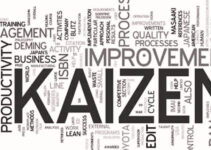Change fatigue outlines the exhausted feelings that the employees experience at the workplace due to the consistent changes. It exhibits in various ways and has a negative impact on the satisfaction level of employees, retention rate, and their physical health. Change fatigue would compel workers to find opportunities elsewhere outside the organization. Today, we’ll discuss change fatigue in the workplace; statistical facts and figures, signs, causes, and tips on how to deal with change fatigue.
Statistical facts and figures about change fatigue
- 54% of HR professionals say that their employees are experiencing change fatigue
- 71% of American employees faced overwhelming changes in the workplace during the pandemic crisis
- 83% of the employers don’t provide sufficient support and resources to their employees to make adjustments to the changes
- Gartner’s study claimed that employees have the capability to deal with 50% of the changes
Signs of Change Fatigue
- Limited productivity
- Attendance issues
- Negative effect on health
- Poor performance
- Disengagement
- Exhaustion
- Burnout
- Frustration
- Fearful feelings
- Negative attitude
- High conflict
Causes of Change Fatigue
- Too many changes one after another
- Limited trust
- Not seeing the results of changes
- Bad changes
- No energy to adopt new changes
Affected Roles by Change Fatigue
- Human resource
- Sales
- Customer service
- Operations
Change fatigue in the workplace offers you methods and strategies on how to deal with change-related stress and pressure in the working environment.
How to Deal with Change Fatigue in the Workplace
Let’s discuss how to deal with change fatigue in the workplace; some of the top tips are as follows;
Creating Safe Environment
When employees and team members are working in a safe environment; it boosts their confidence level and morale. It is because they feel safe to share their concerns about the changes. However, it requires managers to have an emphatic attitude and provide support for the changes. They should have one-on-one meetings with their team members and ask them how they’re doing.
During the change program, it is significant for the training managers to offer support and have an emphatic attitude. Managers need training like leadership development programs to develop a safe working environment during the transition phase.
Feedback Loop
Along emphatic attitude and open communication, employees and team members should feel that the management is paying heed to their concerns. Managers should develop a feedback loop process, it allows them to see how the employees and workers are dealing with changes. It comprises engaging in open discussion, conducting anonymous surveys, and getting their input before launching any type of changes. They should ask them what type of support and resources they need from the leadership to make sure their values and expectations are streamlined.
Open Communication
There is a difference between highly confidential and public information, and companies should maintain a balance while sharing the information publically. They should have open and transparent communication about the change programs. It allows them to establish a sense of safety and a trusting atmosphere across the organization. Employees should be aware of the changes that are coming in the next few weeks. HR managers could help the company’s leadership by drafting them about the change communication plan.
Same Attitude Towards Big or Small Change
Whether the change program is big or small, the company’s leadership should consider all types of changes the same in terms of communication and execution plan. It helps employees to develop an open and trusting attitude about the changes; because they are confident that they would receive clear communication guidelines for the change project.
Providing Change Support
While implementing companywide changes, the management should offer support to the employees and team members impacted by the change initiative. For instance, the management should arrange a mental health professional that would de-escalate the situation and make them feel calm and relaxed. Some mental health professionals conduct meditation sessions and teach them techniques of self-relaxation while feeling overwhelmed.
Give Reasons for Change
For the sustainable change program, team members and employees should have a complete comprehension of the change program. The management should offer them the reason for the change program. Change is difficult, but when the management is clear about the changes, then it amplifies their participation rate.
Flexible Attitude
Open communication and a flexible attitude are the keys to effective implementation of the change program. The flexible attitude of the team members and workers helps them to adapt to the changes. However, it is difficult to deal with changes, a flexible attitude allows you to successfully move forward with changes.
Promote Resilience
When employees have support backed up by resources, it makes them more resilient to explore the changes. Leaders and managers who are cautious about the health and well-being of employees, and their team would adopt the changes. As a result, it amplifies their growth and productivity and allows them to succeed in the change program.
Conclusion: Change Fatigue in the Workplace | How to Deal with Change Pressure
After an in-depth study of the change fatigue in the workplace; we have realized that change fatigue decreases the morale and confidence level of employees. If you are learning about how to deal with change fatigue in the workplace; then you should keep in mind the abovementioned tips and strategies.
Ahsan is an accomplished researcher and has a deep insight in worldly life affairs. He goes Live 3 days a week on various social media platforms. Other than research writing, he’s a very interesting person.


